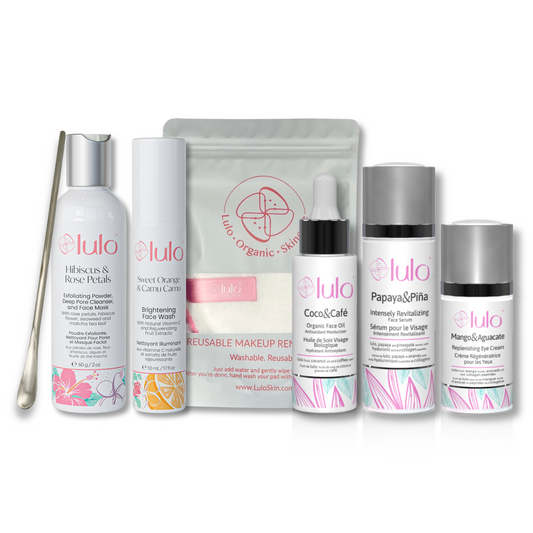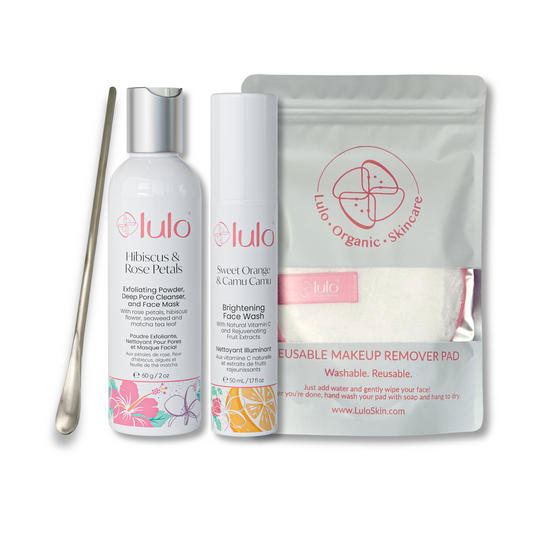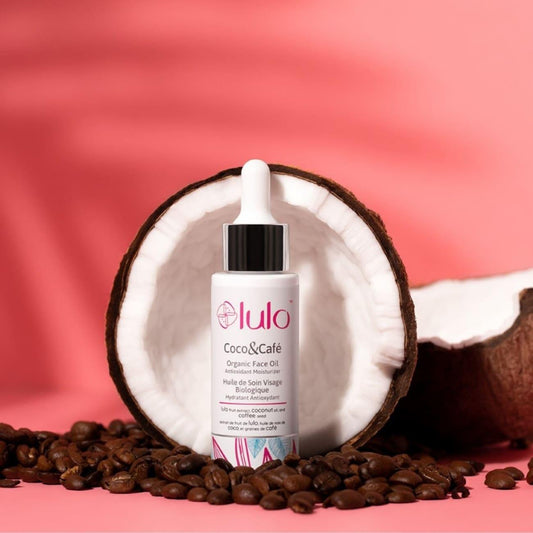
How To Read And Understand Skincare Labels
Beauty product labels can be confusing, especially with so much contradicting information out there. However, here are three facts that can’t be disputed and will help you better understand what’s in your products and recognize ingredients that should be avoided.
1. Skincare Ingredients Are Listed In Latin
There’s a super-high chance you’ll come across Latin terms on your skincare product labels. Don’t be concerned—this is a good thing. When you see Latin on a label, it’s just the name of the botanical. For example, Solanum Quitoense, is the scientific name behind lulo fruit; and Ananas Sativus is the scientific name of Pineapple. This is the standard way to name natural ingredients to avoid confusion due to translation, and to identify the content regardless of where it was manufactured.
It’s important to know the difference between Latin names vs. those super-long ingredient names that you can’t pronounce (like “sodium hydroxymethylglycinate”), they’re chemicals and they could be linked to health issues. As a precautionary measure, stay away from products with this type of chemical ingredients or look them up on reliable sources like the Environmental Working Group Organization to learn about their toxicity.
At Lulo Skin, we stay away from chemicals that are considered toxic or irritant. Our products show the botanical or Latin name of the ingredient, followed by the English name -in parentheses and in a different colour- to help you recognize it, how cool is that for transparency!
2. Ingredients are Listed From Highest to Lowest Concentration
This means if a really great ingredient is listed at the bottom, you're not going to get much benefit from it. This is a very common, and despicable, trick that some companies use; they advertise the most expensive ingredient but use just a smidge in their formulations… but now you won’t fall for this trick ever again, right? Learn more about deceptive marketing practices by clicking here.
Here is an example of a leading brands ingredient list...

Compare this to our Revitalizing Face Serum - Papaya & Piña ingredient list...

This works the opposite way as well: if an ingredient you're meant to be wary of (like alcohol) is listed within the first three ingredients, opt for another product; but if it is towards the end, the concentration is so low that you should be Ok to use it (we are referring to ingredients that are safe in low concentrations, not to hazardous ingredients that must be avoided even in low doses)
3. The Open-Jar Symbol Represents how Long the Product is Good for Once it's Opened.
This little “jar” symbol is called PAO (Period After Opening), it should have a number and a letter “M” that stands for “months” (e.g. 6M, 12M, 24M)
Use those numbers as a guide for when to replace your product. If it contains antioxidants or skin-replenishing ingredients (as it should), they will eventually start to deteriorate.

The more natural and delicate the formula is, the shorter the PAO will be, in order to preserve a skincare product for more than 12 months, stronger and more concentrated preservatives have to be used, so be suspicious of skincare products that don’t communicate their PAO or that claim a shelf life beyond 12M.
Following expiration dates is very important with skincare and makeup. Always prefer products in airless pumps, as they do a much better job at preserving the integrity of your products, and avoid products that come in a pot (or any packaging that requires using your fingers to get the formula out), bacteria can transfer easily, and you run the risk of adding bacteria to your skin every time you touch them without washing your hands.
Are labels less confusing for you now? Let us know if you have any questions about Lulo Organic Skincare’s labels, we’re all for transparency and clarity!





2 comments
I never noticed the ‘little open jar’ until now..thank you for that info, it’s awfully good to know :)
Good info!!!! Thanks!